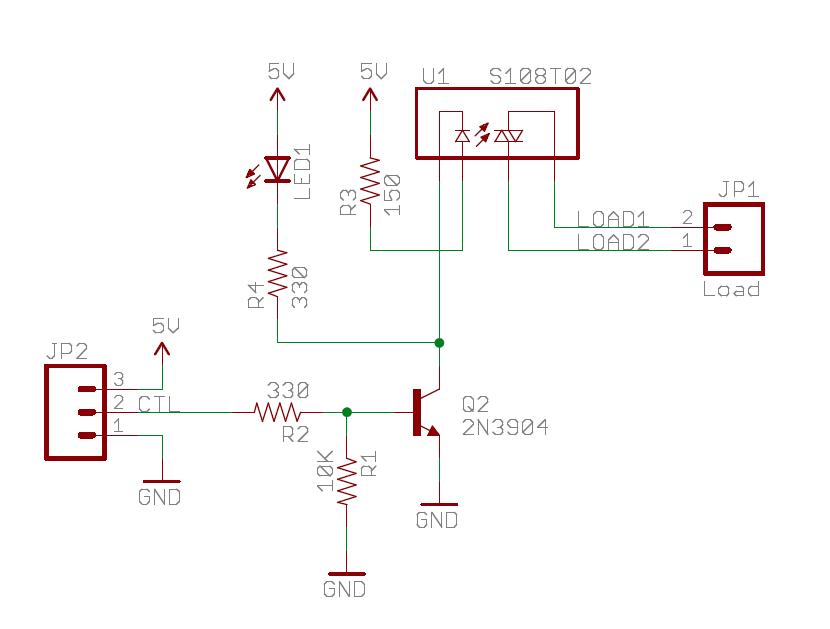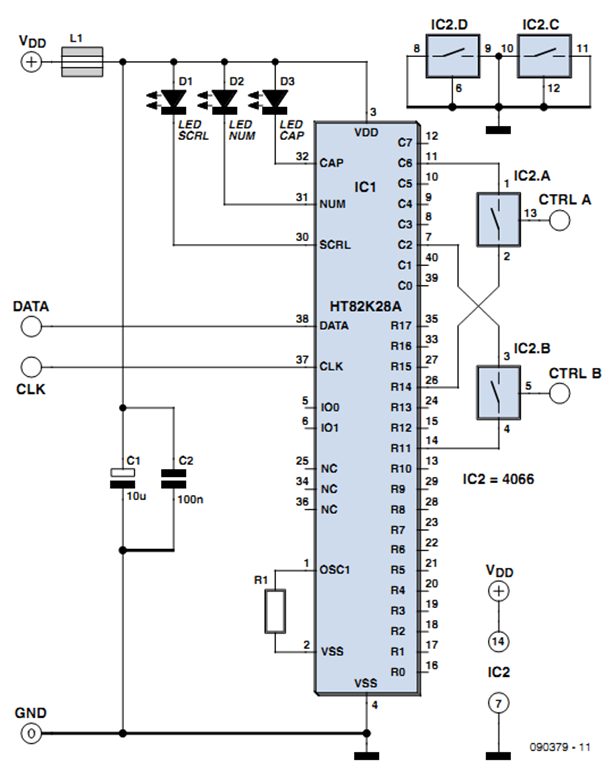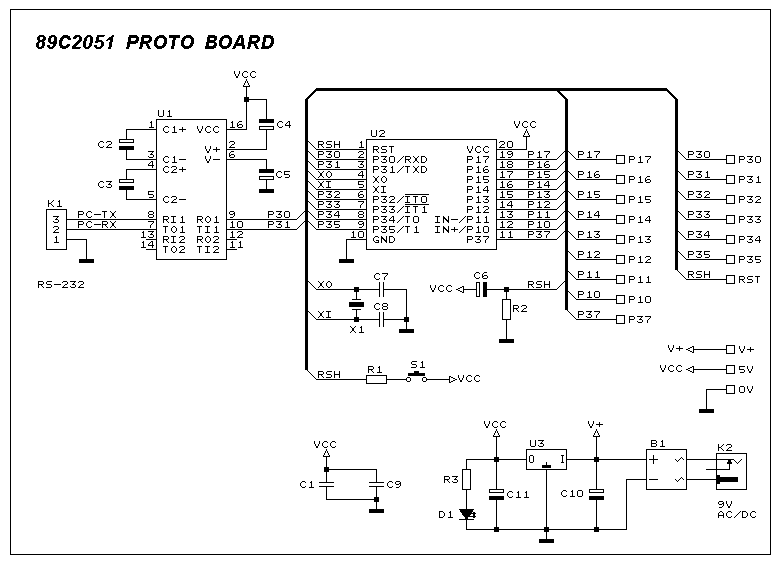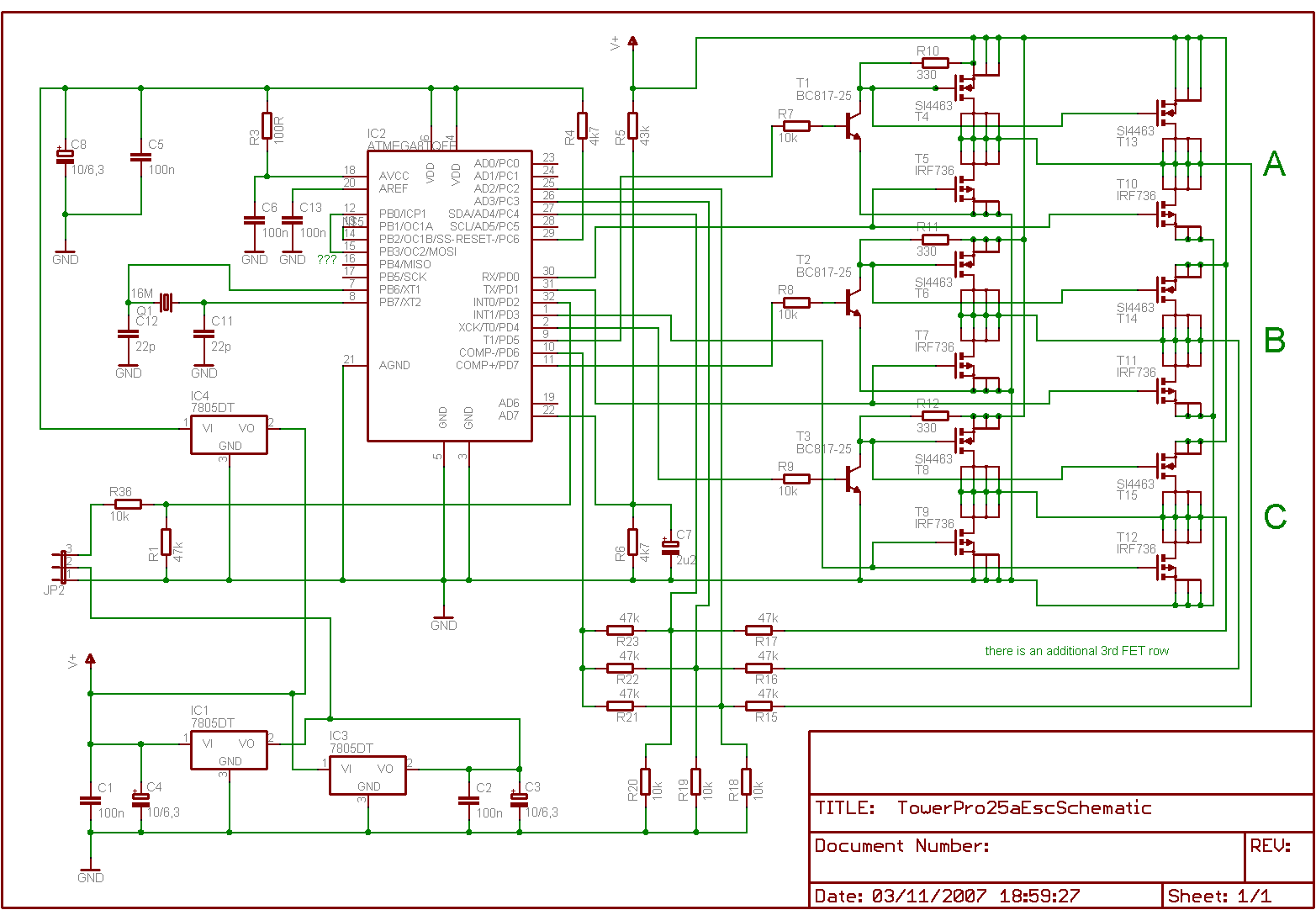
mc board

The Flash MC Experimenting Board I serves as an excellent platform for development activities involving Atmel Flash microcontrollers, specifically the AT89C1051, AT89C2051, and AT89C4051. This board is suitable for both beginners and experienced developers, as it provides a universal and standardized platform that facilitates the realization of various projects. Essential components for a Flash microcontroller application are integrated directly onto the Flash MC Experimenting Board I. These components include voltage regulation and stabilization, an oscillator, Power-On Reset (POR) wiring, a reset switch, a 6x DIP switch for configuration purposes, pin rows for solder connections, and additional features.
The Flash MC Experimenting Board I is designed to enhance the development process for Atmel microcontrollers by providing a comprehensive set of features that streamline the prototyping and testing phases. The integrated voltage regulation and stabilization circuitry ensures that the microcontroller operates reliably under varying power conditions, which is critical for maintaining performance and preventing damage. The oscillator circuit is essential for providing the necessary clock signal to the microcontroller, allowing for precise timing and synchronization of operations.
The inclusion of Power-On Reset (POR) wiring is a significant feature, as it guarantees that the microcontroller starts in a known state after power is applied, preventing erratic behavior during startup. The reset switch allows users to manually reset the microcontroller, facilitating troubleshooting and testing of various functions.
The 6x DIP switch included on the board provides a flexible means of configuring various operational parameters without the need for complex wiring or additional components. This feature is particularly useful for developers who wish to test different configurations rapidly.
Furthermore, the presence of pin rows for solder connections enhances the board's versatility, enabling users to add custom components or interfaces as required for their specific applications. Overall, the Flash MC Experimenting Board I is a robust and versatile tool for anyone working with Atmel Flash microcontrollers, supporting a wide range of development projects from simple experiments to complex applications.The Flash MC Experimenting Board I is an ideal platform for all developements in conjunction with the Atmel Flash microcontrollers AT89C1051, AT89C2051 and AT89C4051. It is not only recommendable for starters but also very much recommendable for the advanced developer due to the fact that it offers an universal and standardized platform which enables to bring almost anything thinkable into reality.
All basic parts of a Flash microcontroller applikation are located directly on the Flash MC Experimenting Board I. To these belong the voltage regulation and stabilisation, the oscillator, the POR-wiring (Power On -> Reset), a reset switch, a 6x DIP switch for all kinds of configuration issues, pin rows for solder connections and lots more..
🔗 External reference
The Flash MC Experimenting Board I is designed to enhance the development process for Atmel microcontrollers by providing a comprehensive set of features that streamline the prototyping and testing phases. The integrated voltage regulation and stabilization circuitry ensures that the microcontroller operates reliably under varying power conditions, which is critical for maintaining performance and preventing damage. The oscillator circuit is essential for providing the necessary clock signal to the microcontroller, allowing for precise timing and synchronization of operations.
The inclusion of Power-On Reset (POR) wiring is a significant feature, as it guarantees that the microcontroller starts in a known state after power is applied, preventing erratic behavior during startup. The reset switch allows users to manually reset the microcontroller, facilitating troubleshooting and testing of various functions.
The 6x DIP switch included on the board provides a flexible means of configuring various operational parameters without the need for complex wiring or additional components. This feature is particularly useful for developers who wish to test different configurations rapidly.
Furthermore, the presence of pin rows for solder connections enhances the board's versatility, enabling users to add custom components or interfaces as required for their specific applications. Overall, the Flash MC Experimenting Board I is a robust and versatile tool for anyone working with Atmel Flash microcontrollers, supporting a wide range of development projects from simple experiments to complex applications.The Flash MC Experimenting Board I is an ideal platform for all developements in conjunction with the Atmel Flash microcontrollers AT89C1051, AT89C2051 and AT89C4051. It is not only recommendable for starters but also very much recommendable for the advanced developer due to the fact that it offers an universal and standardized platform which enables to bring almost anything thinkable into reality.
All basic parts of a Flash microcontroller applikation are located directly on the Flash MC Experimenting Board I. To these belong the voltage regulation and stabilisation, the oscillator, the POR-wiring (Power On -> Reset), a reset switch, a 6x DIP switch for all kinds of configuration issues, pin rows for solder connections and lots more..
🔗 External reference





